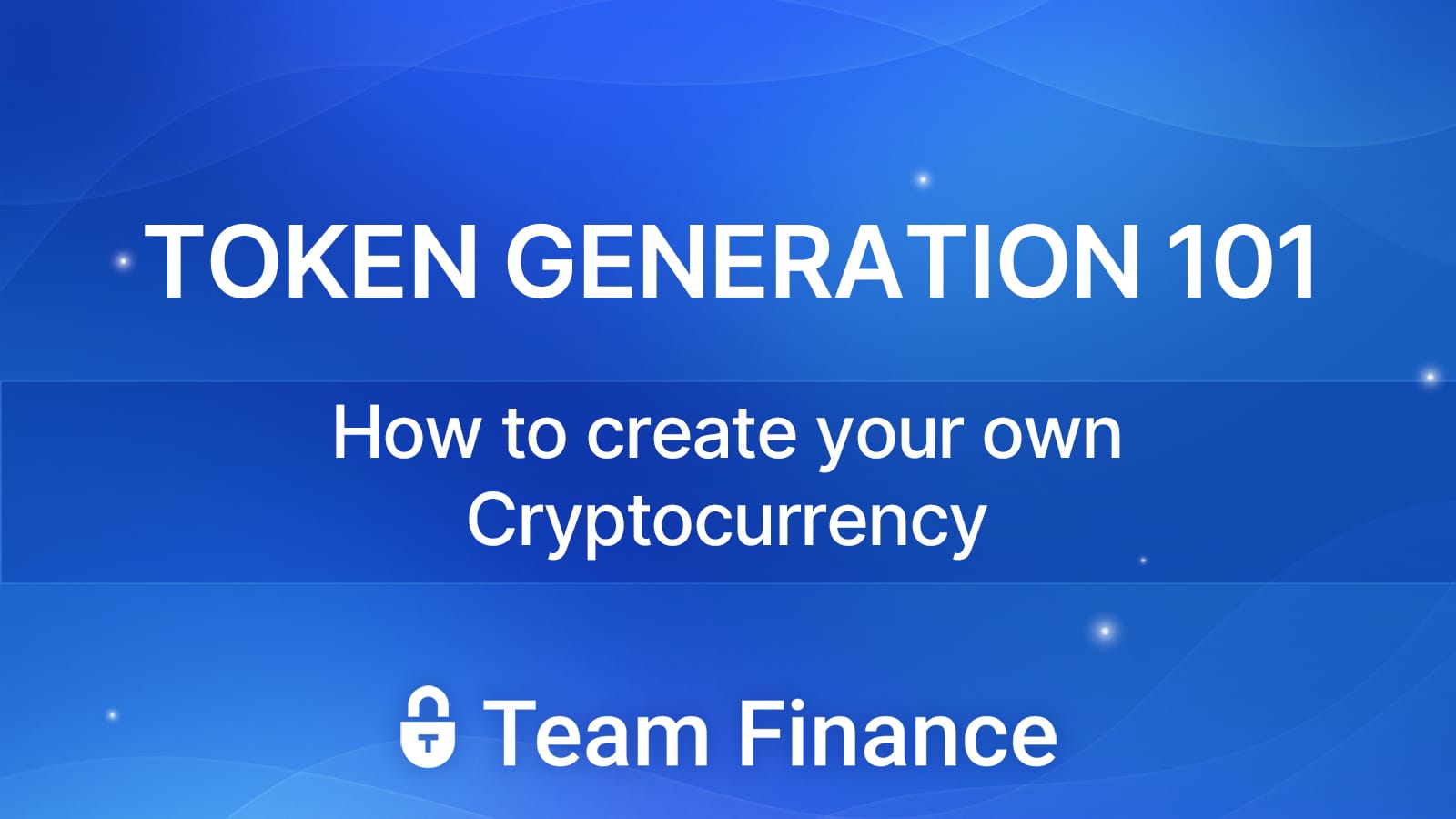Token Creation 101: Minting, Tokenomics, and More
How do you mint a token and set up your tokenomics for success? Read our extensive guide on token generation for free...

If you’re interested in creating your own token but need more technical expertise, you’ve come to the right place. This guide will teach you how to do it quickly. By utilizing two powerful tools discussed in this article, you’ll have the knowledge to launch your own blockchain project.
In the last few years, crypto has absolutely sky-rocketed in popularity – and while it may seem difficult to create your own tokens, it’s really not.
So let’s talk first steps. You may have an idea for a token that you want to create. But where does someone actually begin?
Step 1: Token Specs
If you have a project in mind, this section will be a breeze.
To start, select a name for your project and an abbreviation for the token name. If you have an image or a logo for the token, be sure it’s in the right format (.jpeg, .jpg, or .png – 2MB max).
Additionally, you’ll need to choose which blockchain to launch on. For this guide, we will use Ethereum’s Sepolia testnet, allowing you to perform transactions without any costs. The testnet serves as a preparation platform before deploying your project onto Ethereum’s Main Network. Once you’ve successfully launched on the testnet, the exact same process can be followed for Ethereum’s Main Network.
You will also need to select a token decimal amount.
18 is the default and the easiest to work with if you want to have a larger token supply.
Finally, you will decide how many tokens you want to create and how they will be distributed between the team, treasury, early investors, and public sale.
Step 2: Token Creation Tool
Once you have all of the above information, you’ll proceed to the Team Finance Token Creator.
If you don’t have any ETH on Sepolia Testnet in your wallet, you can acquire some via the Alchemy faucet, where you can get up to .5 Sepolia ETH per day for free.
Team Finance has a dedicated help page for creating your token if you require more assistance.
Let’s get started!
- Connect your wallet and choose Sepolia as your network.
- Customize your token with your desired information.
- In the next step, you have the option to add more advanced features like transaction fees or mint and burn functions. However, for this tutorial, we will leave them unchecked.
- Once you’re done, you can proceed to mint your first token.
- If you’re satisfied with the results of your work on Sepolia Testnet, we can move on to Ethereum Mainnet. It’s important to note that this will involve real money and real Ethereum, so ensure that you’re completely confident with everything before proceeding.
You can always go to the Team Finance Docs Page for more help or hop into their Telegram to speak with support.
With the contract deployed, your token is now live.
Congrats! You may now start building your community and your project.
Step 3: Tokenomics
In Step 1, we talked about the number of tokens and how they will be distributed among investors, including how they will be vested.
We need to determine these numbers, and the best way to do it is by using a tokenomics tool.
The Team Finance Enterprise Tokenomics Tool is an excellent option that’s free to use and provides detailed instructions on how to develop the tokenomics of your token.
Once you completed your tokenomics, you can head to Team Finance to vest your tokens to your investors from public and private sales.
If you have not had a token sale yet, contacting the Team Finance Enterprise team may be of value. They can help get your project kickstarted and moving!
If you’re seeking assistance with the development of your token project, Team Finance Enterprise can provide comprehensive solutions from start to finish, such as customized branding for claiming portals, staking, vesting, and many other services.
To reach out to the team directly, use the contact form located at the bottom of the Team Finance Enterprise page.

